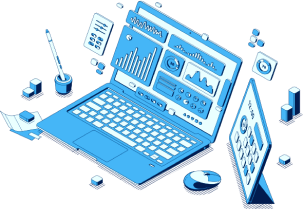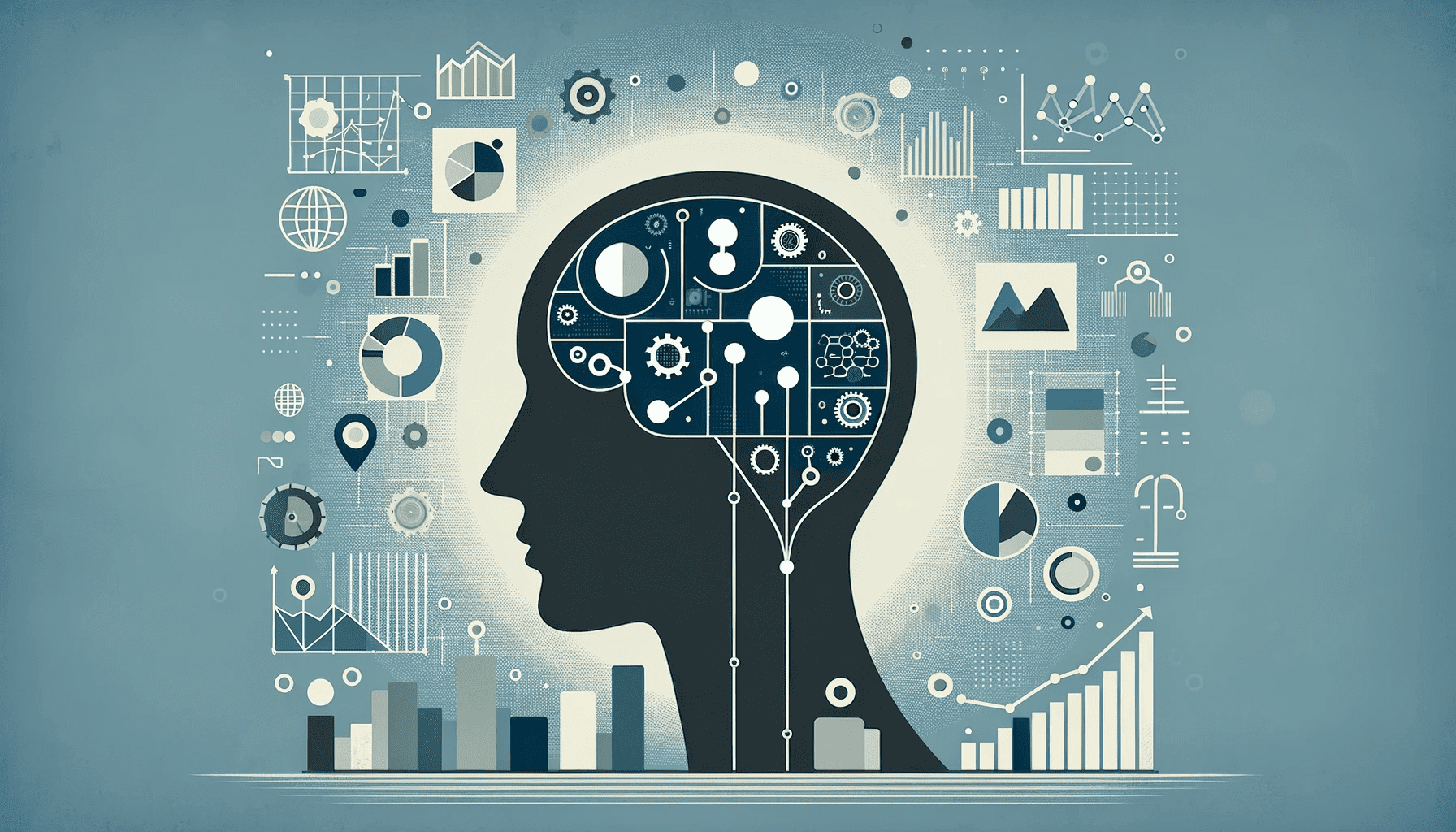Related courses
See All CoursesIntermediate
NumPy in a Nutshell
NumPy is one of the basic packages for scientific computing in Python. The 'NumPy in a Nutshell' course will introduce you to such a powerful tool as NumPy, which is convenient for working with arrays of different sizes. After completing this course, you will be able to easily work with matrices, using various functions. In addition, during the course, you will learn basic methods for working with arrays that simplify code writing.
Intermediate
Pandas First Steps
Pandas is an extremely user-friendly library for data analysis. It's also designed to handle large datasets, using data structures like DataFrame and Series. This makes it an invaluable tool for Data Science. In this guide, you'll get acquainted with a range of statistical functions, including how to find correlations, modes, medians, and maximum and minimum values within a dataset. You'll also learn how to handle missing values and manipulate specific values, as well as how to remove them.
Intermediate
Visualization in Python with matplotlib
Visualization is one of the most common ways of representing data. By using different kinds of plots (like scatter-plot, histogram, bar charts, and so on) you can find some insights in your data, or approve/reject some assumption/hypothesis. In this course, you will be introduced to the matplotlib library, and learn how to build different charts.
10 Essential Python Libraries Every Data Scientist Should Master
Python Libraries for Data Science

Introduction
Python is a powerhouse in the world of data science, renowned for its simplicity and robust library ecosystem. Mastering these libraries is crucial for anyone aspiring to excel in data science. This article delves into essential Python libraries, focusing on their in-depth functionalities and applications.
Brief Outline
We'll explore each library's unique features and how they contribute to various aspects of data science. Whether you're manipulating data, creating models, or visualizing results, these libraries are tools you cannot afford to overlook.
Embark on your Python journey with our Python Data Analysis and Visualization track, perfect for understanding python libraries for data science.
Python Libraries for Data Science
NumPy
NumPy is a fundamental package for scientific computing in Python. It offers comprehensive mathematical functions, random number generators, linear algebra routines, Fourier transforms, and more. NumPy is known for its array object, which is much more efficient than traditional Python lists. It's crucial for handling numerical data and serves as the foundation for many higher-level tools. NumPy's efficiency in array processing makes it a must-have in any python libraries list.
Learn NumPy with our NumPy in a Nutshell course.
Pandas
Pandas is a powerhouse for data manipulation and analysis, offering powerful, expressive, and flexible data structures. The DataFrame is its primary tool, allowing fast data cleaning, preparation, and analysis. Pandas can handle a variety of data types and integrates seamlessly with databases, spreadsheets, and web APIs.
Master Pandas in our Pandas First Steps course.
Matplotlib
Matplotlib is a comprehensive library for creating static, animated, and interactive visualizations in Python. It offers an array of plots and charts, customizable to the finest detail. Matplotlib is incredibly powerful for visualizing complex datasets and is often used in conjunction with Pandas for exploratory data analysis.
Explore data visualization through our Visualization in Python with matplotlib course.
Seaborn
Seaborn extends Matplotlib's functionality, offering a higher-level interface for statistical graphics. It simplifies the creation of beautiful and informative statistical plots. Seaborn is ideal for exploring and understanding complex datasets and works well with Pandas DataFrames.
Dive into Seaborn with our First Dive into seaborn Visualization course.
SciPy
SciPy is built on NumPy and provides additional functionality for scientific computing. It includes modules for optimization, integration, interpolation, eigenvalue problems, algebraic equations, differential equations, and other tasks in science and engineering. SciPy is particularly useful for researchers and developers who need to perform complex scientific calculations.
Learn SciPy with our Learning Statistics with Python course.
Scikit-learn
Scikit-learn is a versatile machine learning library for Python. It features various classification, regression, clustering algorithms, including support vector machines, random forests, gradient boosting, and more. It's designed to interoperate with NumPy and Pandas. Scikit-learn is known for its ease of use and flexibility, making it a staple in machine learning.
Enhance your machine learning skills with our ML Introduction with scikit-learn course.
Statsmodels
Statsmodels provides classes and functions for estimating different statistical models and conducting statistical tests. It's a great tool for statistical data exploration, and it's particularly useful for econometrics, time series analysis, and hypothesis testing.
Learn statsmodels with our Linear Regression with Python course.
TensorFlow
TensorFlow is an end-to-end open-source platform for machine learning. It has a comprehensive, flexible ecosystem of tools, libraries, and community resources. TensorFlow is widely used for deep learning models due to its ability to handle large-scale, multi-dimensional arrays, which are common in neural networks.
Explore Neural Networks in our Introduction to Neural Networks course.
Jupyter Notebook
Jupyter Notebook is an open-source tool for interactive computing. It supports live code, equations, visualizations, and narrative text. Jupyter is perfect for data cleaning, numerical simulations, statistical modeling, machine learning, and more.
Start with Jupyter Notebook in our projects.
Requests
Requests is an elegant and simple HTTP library for Python. It makes HTTP requests simpler and more human-friendly, a must-have for web scraping or interacting with REST APIs.
Run Code from Your Browser - No Installation Required

Conclusion
These Python libraries are pillars in the realm of data science, offering unparalleled resources for data manipulation, analysis, visualization, and machine learning. Familiarity and proficiency with these tools are essential for any aspiring data scientist. How to install python libraries varies, but typically involves simple pip commands. Each library's documentation provides specific installation instructions.
To advance your data science skills and explore further Python libraries, visit our course catalog. Continue your learning journey with us and expand your potential in this exciting field.
FAQs
Q: When should I use TensorFlow over Scikit-learn in data science?
A: Use TensorFlow for complex tasks involving deep learning and large datasets. Scikit-learn is more suitable for general machine learning tasks and smaller datasets.
Q: Can I use Pandas for time series data?
A: Absolutely. Pandas is excellent for handling time series data, offering specific functions and methods for time-based indexing and resampling.
Q: Is NumPy still relevant with the advent of advanced libraries like TensorFlow?
A: Yes, NumPy remains relevant. It's the foundation of most Python data science libraries, including TensorFlow, due to its efficiency in numerical computations.
Q: How do I choose between Matplotlib and Seaborn for my project?
A: Use Matplotlib for highly customized visualizations. Choose Seaborn when you need to create informative statistical graphics quickly and want more attractive default styling.
Q: Is Jupyter Notebook suitable for collaborative projects?
A: Jupyter Notebook is great for collaboration, allowing multiple users to edit and run code, and share live code, visualizations, and narrative text.
Start Learning Coding today and boost your Career Potential

Related courses
See All CoursesIntermediate
NumPy in a Nutshell
NumPy is one of the basic packages for scientific computing in Python. The 'NumPy in a Nutshell' course will introduce you to such a powerful tool as NumPy, which is convenient for working with arrays of different sizes. After completing this course, you will be able to easily work with matrices, using various functions. In addition, during the course, you will learn basic methods for working with arrays that simplify code writing.
Intermediate
Pandas First Steps
Pandas is an extremely user-friendly library for data analysis. It's also designed to handle large datasets, using data structures like DataFrame and Series. This makes it an invaluable tool for Data Science. In this guide, you'll get acquainted with a range of statistical functions, including how to find correlations, modes, medians, and maximum and minimum values within a dataset. You'll also learn how to handle missing values and manipulate specific values, as well as how to remove them.
Intermediate
Visualization in Python with matplotlib
Visualization is one of the most common ways of representing data. By using different kinds of plots (like scatter-plot, histogram, bar charts, and so on) you can find some insights in your data, or approve/reject some assumption/hypothesis. In this course, you will be introduced to the matplotlib library, and learn how to build different charts.
Data Analyst vs Data Engineer vs Data Scientist
Unraveling the Roles and Responsibilities in Data-Driven Careers
by Kyryl Sidak
Data Scientist, ML Engineer
Dec, 2023・8 min read

Top 3 SQL Certifications
How to Confirm Your SQL Skills
by Daniil Lypenets
Full Stack Developer
Sep, 2023・9 min read

Systematic errors in Data Analysis
Top systematic errors in DA
by Ruslan Shudra
Data Scientist
Dec, 2023・14 min read

Content of this article